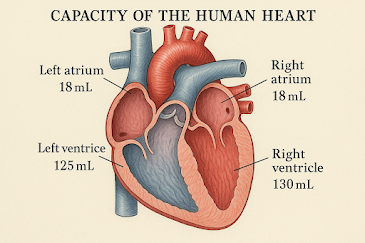The human heart, often described as the engine of life, beats approximately 100,000 times per day, tirelessly supplying oxygen-rich blood to the body. Despite its strength and endurance, the heart's capacity for self-repair is surprisingly limited. Unlike the liver or skin, the adult human heart lacks robust regenerative abilities, especially following injuries such as myocardial infarction (heart attack). However, recent scientific discoveries and technological advancements are shedding light on potential pathways to enhance cardiac regeneration.
Limited Regeneration in the Human Heart
Adult mammalian hearts, including those of humans, generally do not regenerate damaged tissue effectively. When heart tissue is damaged—commonly due to blocked arteries leading to heart attacks—the injured muscle is typically replaced by scar tissue. This fibrous tissue cannot contract, leading to reduced cardiac function and often progressing to heart failure. This lack of regenerative ability is a major contributor to the global burden of cardiovascular diseases.
The Role of Cardiac Stem Cells
While the regenerative ability of the human heart is limited, it is not entirely absent. Research has identified cardiac stem cells, particularly in the atria, that are capable of generating new heart muscle cells (cardiomyocytes). These cells can contribute to minor repair processes; however, their regenerative output is generally insufficient to reverse large-scale damage such as that sustained during a heart attack. This restricted potential limits the body's natural capacity for recovery and restoration of cardiac function.
Factors Influencing Cardiac Regeneration
Several biological and molecular factors contribute to the limited regenerative capacity of the human heart:
-
Hormonal Influence: After birth, hormonal changes in the body suppress the proliferation of cardiomyocytes, the muscle cells of the heart.
-
Centrosome Disassembly: The centrosome, a key organelle involved in cell division, disassembles in heart muscle cells shortly after birth. This disassembly halts their ability to divide and regenerate.
-
Inflammatory Response: Post-injury inflammation often leads to scar tissue formation, further impeding regeneration.
-
Genetic and Epigenetic Regulation: Specific genes and molecular signaling pathways involved in growth and development are downregulated in adult hearts.
Ongoing Research and Therapeutic Approaches
Despite these challenges, researchers around the world are actively exploring ways to enhance the heart’s ability to regenerate and repair itself. Some of the most promising areas of investigation include:
-
Stem Cell Therapy
Scientists are investigating the use of stem cells—such as mesenchymal stem cells or induced pluripotent stem cells (iPSCs)—to regenerate heart tissue. These cells can be injected into the damaged area to promote the formation of new cardiomyocytes and stimulate blood vessel growth. -
Bioengineering Techniques
Advances in tissue engineering have enabled the development of bioengineered heart tissues and valves. By using a patient’s own cells to build these structures, researchers aim to reduce the risk of immune rejection and improve integration with native heart tissue. -
Metabolic Reprogramming
Altering the energy metabolism of cardiomyocytes is another emerging approach. By shifting the metabolic profile of these cells to resemble that of regenerative fetal heart cells, scientists hope to reignite their ability to proliferate. -
Understanding Molecular Mechanisms
A deeper understanding of the signaling pathways and genetic regulators involved in heart development and repair is essential. Researchers are exploring pathways such as Hippo, Wnt, and Notch signaling for their roles in cell growth and regeneration. Targeting these pathways may offer new drug development opportunities.
The Future of Cardiac Regenerative Medicine
While the road to fully regenerating the human heart is long and filled with scientific hurdles, the progress made thus far is encouraging. The development of therapies that enhance the natural healing processes of the heart could revolutionize treatment for millions of people suffering from heart disease. With continued investment in research and innovation, the vision of a heart capable of significant self-repair may one day become a reality.
In conclusion, the human heart may not possess the innate regenerative prowess of some other organs, but science is steadily unlocking its potential. Through a combination of stem cell therapy, bioengineering, and molecular biology, we move closer to transforming cardiac care and offering new hope to patients with damaged hearts.
For Enquiries: cardiologysupport@


.webp)
.jpeg)

No comments:
Post a Comment